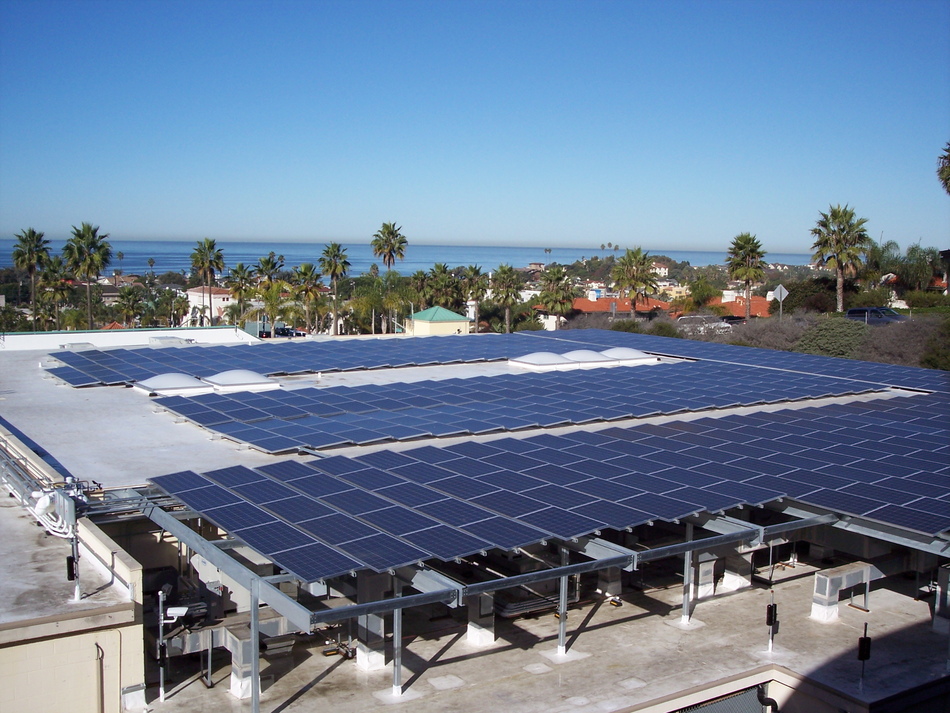Green Building Ordinance Adopted to Advance City’s Climate Action Goals
The City of Encinitas adopted a comprehensive Green Building Ordinance (Ordinance 2021-13) on October 27, 2021. The Ordinance is considered a “reach code,” as it exceeds California’s existing building energy standards. Other California cities such as Oakland, Palo Alto, Long Beach, and Santa Barbara have similar ordinances and building codes. With adoption of Ordinance 2021-13, Encinitas is the first local jurisdiction in the San Diego region to require all new buildings to include electric appliances, but the fiftieth jurisdiction in the state to do so.
Much of the energy that powers, heats, and cools buildings in our community is generated through the burning of fossil fuels like natural gas, which releases greenhouse gases (GHG) and other harmful emissions into the atmosphere. Ordinance 2021-13 sets higher energy efficiency standards for residential and commercial buildings and advances decarbonization—the reduction of GHG emissions generated by the burning of fossil fuels—of all buildings.
Adoption of Ordinance 2021-13
Three public workshops were held before the Ordinance was officially adopted by City Council in October. Encinitas residents, businesses, local developers, and builders were invited to attend all public meetings pertaining to Ordinance 2021-13. Ordinance 2021-13 still requires approval by the California Energy Commission but is likely to be approved, and subsequently effective, on January 26, 2022.
What’s Included in Ordinance 2021-13?
Ordinance 2021-13 implements several measures contained in the City’s award-winning Climate Action Plan (CAP), including:
- BE-1: Adopt a Residential Energy Efficiency Ordinance
- BE-2: Require Decarbonization of New Residential Buildings
- BE-3: Adopt Higher Energy Efficiency Standards for Commercial Buildings
- BE-4: Require Decarbonization of New Commercial Buildings
- RE-3: Require Commercial Buildings to Install Solar Photovoltaic Systems
Ordinance 2021-13 requires residential remodels to install certain energy efficiency upgrades as part of their project(s), such as duct sealing, LED lighting, and water heater insultation. This requirement applies to residential additions and alterations with a permit value of $50,000 or greater.
According to the new code, certain non-residential remodels and new builds will be required to install solar photovoltaic panels as part of their project. Non-residential buildings include those zoned commercial, high-rise multi-family, or hotels/motels. The solar requirement applies to additions that increase the total roof area by 1,000 square feet or alterations with a permit value of $1 million or more that affect at least 75 percent of the building floor area. Some limited exceptions to this solar provision include 1) where practical challenges exist, 2) when procuring the greatest available renewable energy from a local electric company, or 3) if an alternate on-site renewable energy source, such as wind, is utilized.
Other efficiency upgrades such as door seals and energy-wise indoor and outdoor lighting systems are also required for existing non-residential projects. The requirement for energy efficiency upgrades applies to non-residential projects seeking a permit for the addition of 1,000 square feet or greater or an alteration with a permit value of $200,000 or more.
Finally, the ordinance requires all-electric construction of all new buildings, both residential and non-residential. To be considered an all-electric building, the building must feature the following:
- No natural gas or propane plumbing installed within the building
- No gas meter connection
- Must use electricity as the source of energy for space heating, water heating, cooking appliances, and clothes drying appliances
- May include solar thermal pool heating, if applicable
Both residential and non-residential requirements are intended to lower carbon emissions, reduce energy bills, and improve indoor/outdoor air quality, all of which contribute to achieving a greener Encinitas and the City’s CAP goals.
To learn more about specifics, Encinitans are encouraged to read and explore this fact sheet or the official Ordinance document.
Meeting Our Climate Action Plan (CAP) Goals
The efforts of Ordinance 2021-13 stem directly from the Building Efficiency strategy of the City’s CAP, which seeks to cut back on emissions by increasing the energy efficiency of residential and commercial buildings, in addition to reducing energy use in municipal facilities.
The City’s CAP prioritizes climate mitigation and adaption initiatives that not only benefit Encinitans in the present, but also in the future. Efforts like the Green Building Ordinance promote more climate-friendly behaviors and protocols that will assist both our City and community members in reducing their carbon footprints.
Help the City Reach Our CAP Goals by Integrating Green Changes into Your Home!
Commit to reducing GHG emissions by making sustainable changes in your own home and by encouraging your neighbors to do the same. Residents are encouraged to explore the following resources to discover options that meet their individual needs:
- SDG&E Rebates for EnergySTAR Appliances
- Free Home Energy Survey
- Reduce Your Use Rewards Program
- The Switch Is On
Where Can I Find More Information?
To learn more about the specifics of Ordinance 2021-13, please review the adopted Ordinance. With further questions please contact Crystal Najera, City of Encinitas’ Sustainability Manager, at cnajera@encinitasca.gov.
Previous Post
Clean-Powered Communities
Next Post
How to incorporate sustainability into your child's online and in school learning

